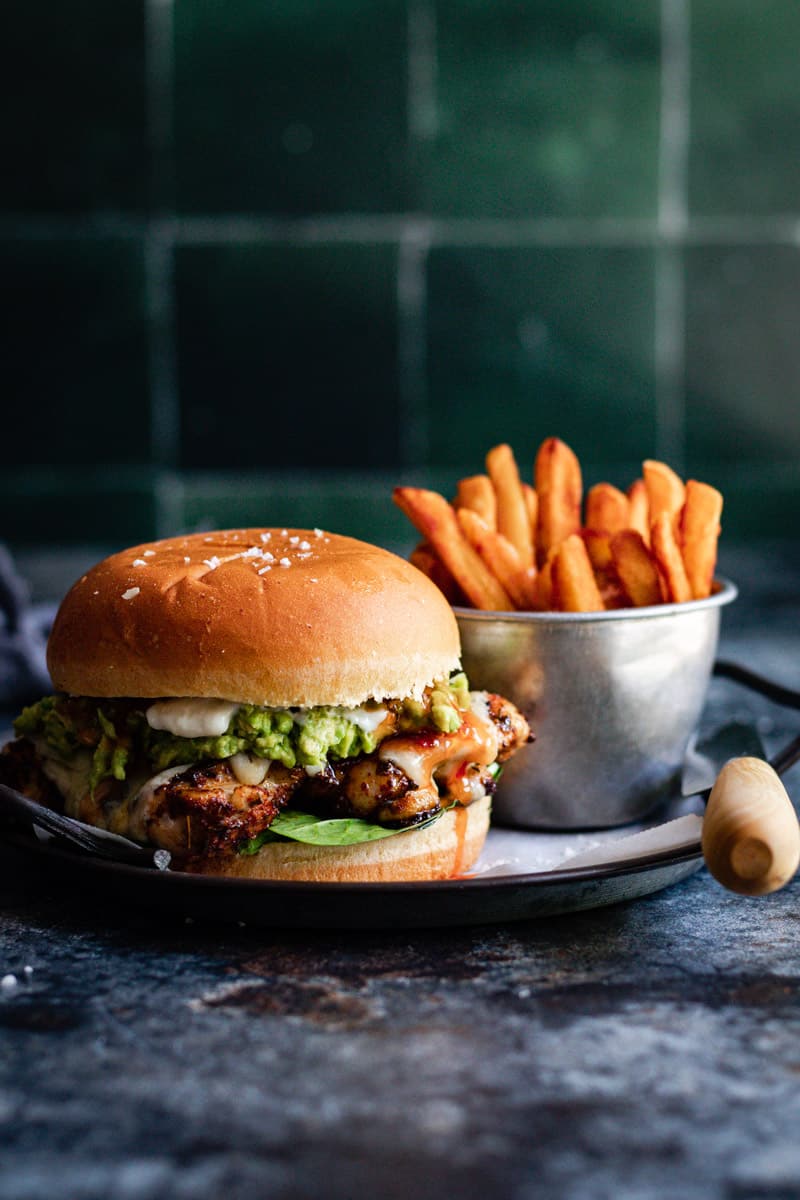How to make dehydrated strawberries (with a dehydrator)
Although technically it is Springtime here, the actual feeling of Spring still seems a long way away. My daffodils have only just started to pop, and earlier this week, there was talk of a weekend snowfall. Realistically, Spring really comes into its own here about mid-October. Until then, it’s puffa jackets and beanies still. Although the sight (and smell) of fresh Springtime berries aplenty at the market yesterday felt like a good nudge in the right direction. So, I thought with the weekend ahead of me, what a good time to make some dehydrated strawberries for all those Springtime jugs of Pimms that I plan on drinking when the weather warms up a bit!

Why dehydrate you might ask?
Dehydrating strawberries (or any other fruit or vegetables) locks in that delicious seasonal goodness and peak season flavor. So when you’re in the depths of winter, the taste of the warmer months is never far away! They are also ridiculously versatile. I substitute dehydrated fruit sometimes for freeze-dried which normally comes with quite a small shelf life once it’s opened. While it can’t be universally substituted, there are many recipes that dehydrated fruit works just as well if not better.
What you need to get started
- Fresh Strawberries. As many as you want to dehydrate! It’s strawberry season so go nuts! Dehydrate as many ripe strawberries as you can! After cleaning and removing the hull, slice the strawberries into 3mm thick slices. You could also try drying them in quarters, halves, or thicker slices. The dehydrating time may need to be adjusted though. The reason I prefer slicing them is that they are easy to snack on and eat. If I buy organic strawberries or they are from your own garden, as long as they are free from dirt, you can skip the cleaning if you are happy to.
- Dehydrator. If you’ve followed along for a bit, you’ll know that I’m obsessed with my dehydrator. I use it so much. They are so handy when you grow your own fruit and vegetables and have a glut in the garden. Even if you only have a small plot like us, they are worth their weight in gold. We dehydrate everything from garlic to herbs to oranges to decorate the house for Christmas. Dehydrated foods also take up little space in the pantry compared to freezing or canning and last such a long time. A total bonus to have out-of-season foods over the cold Winter months when not a lot grows in the garden. Winner!
- A sharp knife and a cutting board. A paring knife is a great all-purpose knife for cutting fresh fruit and hulling the strawberries. Alternatively, you could also use a strawberry huller.
How to Make Dehydrated Strawberries in a Dehydrator
- Wash and pat dry strawberries with a paper towel.
- Remove the core of each strawberry and cut it into 2-3mm slices using a small sharp knife.
- Lay strawberry slices flat in a single layer without touching on the dehydrator trays.
- Turn the dehydrator on to the dried fruit setting (normally the lowest setting or approx. 52C) and leave to dry for 8 -10 hours or until there is not a hint of moisture. Depending on the size of your strawberries they might need less or more time to dehydrate. After 6 hours, I check on them hourly and asses if the dehydrated berries are ready or not.
- Once cool and at room temperature, store in an airtight container.


Cook’s notes
The size/thickness of the strawberry slices will determine the drying time. My slices generally take 8 hours. I usually turn on the dehydrator just as I’m going to bed and they are done when I wake up the next morning or have them drying all day on a Sunday while I’m pottering about the kitchen.
When choosing strawberries to dehydrate, Fresh, in-season, and fully ripe is my mantra. Discard any fruit that is underipe, overripe, bruised, or moldy. I mainly dehydrate fruit at its peak season, as this guarantees the best results. If you’ve got a ton of excess fruit, a batch of strawberry jam or strawberry cordial is always a good idea too!
If you are worried about moisture, as long as you have dried your strawberries completely, you can always add a food-grade silica gel packet to each of the glass jars you are storing the dried fruit in.
How to store dehydrated strawberry slices
The best way to store dried strawberries for long-term storage is simply in a Mason jar or airtight container in a cool dark place. I use Kilner preserving jars to store my dried fruit. Clip-top jars with a rubber seal are great for keeping food airtight. After a day or two, check for any excess moisture in the jars, a continue to check each day for the next week.
Dehydrated strawberries last up to 6 months if dehydrated and stored correctly.
A bit about food dehydrators
With the right equipment, dehydrating is one of the easiest ways to preserve fresh produce. While you can totally make dried fruit in the oven or air fryer, I find a simple dehydrator is super easy to use and gives a tasty, consistent result. My dehydrator is a Fowlers Vacola ultimate dehydrator. I’ve also used the Cuisinart dehydrator. It’s a really good entry-level option. It’s a bit smaller than my Fowlers Vacola, but it works really well and is a great option if you are just starting out.
How do I use them?
Add strawberry pieces to your favorite morning granola.
Dehydrated strawberries are an easy and healthy snack to pop into school lunch boxes.
Do as I do, and use it as a cocktail garnish. Pimms anyone?
Infuse tea or water with a few slices for a hint of flavor.
Grind dehydrated strawberry chips into a strawberry powder with a high-speed blender and add to buttercream, creams, homemade ice cream, and even yogurt.
Make your own chocolates and pop dried fruit slices on top.
Make your own trail mixes full of dehydrated fruit, nuts and seeds. As well as being a delicious snack, it takes next to nothing to batch up a few containers and you’re set for the week.
Make a batch of strawberry jam and pop some strawberry chips in it. for a little added texture.
Bake them into breads, cakes, cookies, and scones!
Preserving this season’s harvest? Here are a few more recipes you might like…
- Lemon and Passionfruit Curd
- Balsamic Fig Jam
- Slow Roasted Tomatoes
- 5 reasons why you need to dehydrate citrus this winter (and how to do it!)
x
Print
How to make dehydrated strawberries (with a dehydrator)
- Prep Time: 15 minutes
- Cook Time: 8 hours
- Total Time: 8 hours 15 minutes
- Yield: 4 servings 1x
- Category: Snacks
- Method: Dehydrating
- Cuisine: Australian
Description
Lock in that delicious seasonal flavor. The taste of the warmer months is never far away with these dehydrated strawberries. Pimms anyone?
Ingredients
- 500g fresh, ripe strawberries
Instructions
- Wash and pat dry strawberries with a paper towel.
- Remove the core of each strawberry and cut it into 2-3mm slices using a small sharp knife.
- Lay strawberry slices flat in a single layer without touching on the dehydrator trays.
- Turn the dehydrator on to the dried fruit setting (normally the lowest setting or approx. 52C) and leave to dry for 8 -10 hours or until there is not a hint of moisture. Depending on the size of your strawberries they might need less or more time to dehydrate. After 6 hours, I check on them hourly and asses if the dehydrated berries are ready or not.
- Once cool and at room temperature, store in an airtight container.
Notes
The best way to store dried figs for long-term storage is simply in a Mason jar or airtight container in a cool dark place. I use Kilner preserving jars to store my dried fruit. Clip-top jars with a rubber seal are great for keeping food airtight. After a day or two, check for any excess moisture in the jars, a continue to check each day for the next week.
Dehydrated strawberries last up to 6 months if dehydrated and stored correctly.
Nutrition
- Serving Size:
- Calories: 40
- Sugar: 6.1 g
- Sodium: 1.3 mg
- Fat: 0.4 g
- Carbohydrates: 9.6 g
- Protein: 0.8 g
- Cholesterol: 0 mg







Just purchased a dehydrator and I will be making these dehydrated strawberries again. Perfect to snack on and hard to go wrong
So good to hear, thank you for following along Angus x